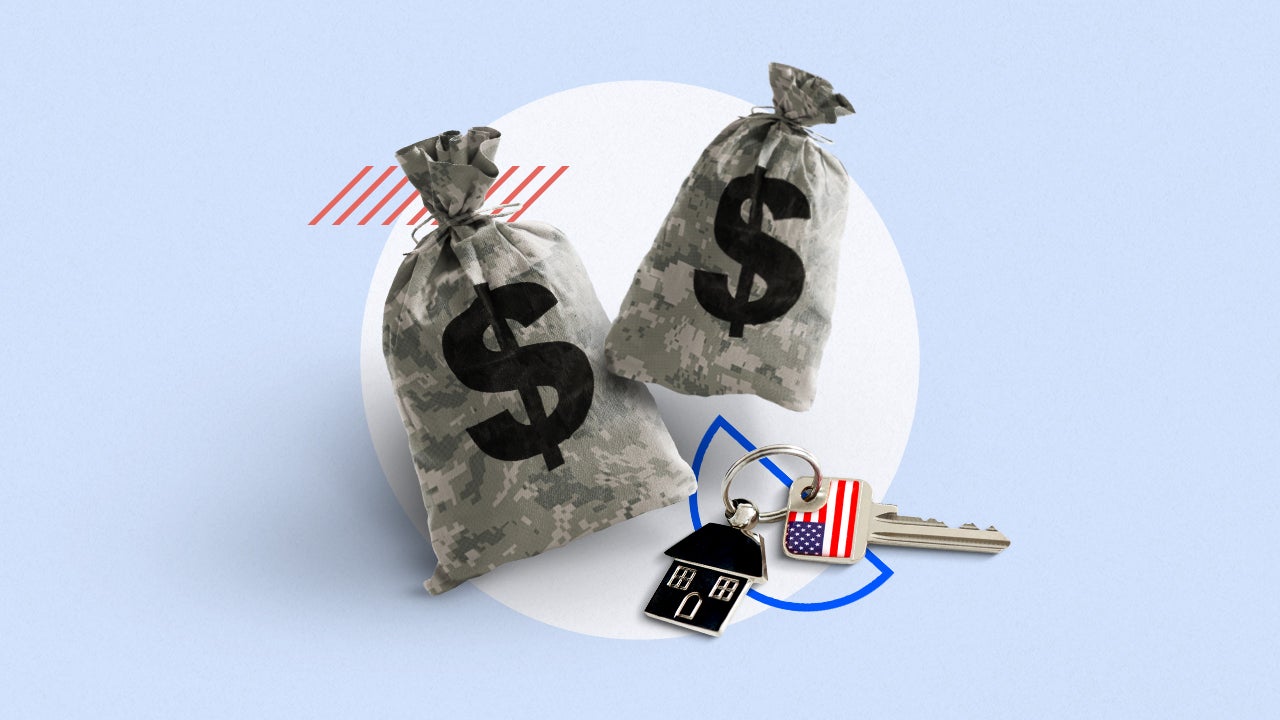What is the VA funding fee?

Key takeaways
- Most VA loan borrowers pay a VA funding fee. The fee is equal to a percentage of the loan amount, and can be paid upfront at closing or bundled into the loan.
- The funding fee costs less if it’s your first time getting a VA loan or you’re doing a VA streamline refinance.
- The funding fee makes it possible for mortgage lenders to offer VA loans without needing a down payment from the borrower.
What is the VA funding fee?
The VA funding fee is a one-time charge paid at closing that enables borrowers to take out a VA loan without needing to make a down payment.
The cost of the VA funding fee is a percentage of the loan amount, which varies by borrower based on:
- Whether you’re buying a home or refinancing
- Whether it’s the first time you’ve obtained a VA loan
- Whether you’re making a down payment (and, if so, how much)
Why does the VA funding fee exist?
The VA funding fee exists to help protect the valuable benefits of the VA loan program without putting any additional costs on taxpayers. Since the government guarantees these loans, the funding fee acts as a protection for lenders in case a borrower stops repaying the loan. Without it, taxpayers would ultimately be on the hook for any defaults.
How does the VA funding fee differ from mortgage insurance?
| VA funding fee | Mortgage insurance |
|---|---|
| Only applies to VA loans | Applies to borrowers taking out a conventional or FHA loan with less than 20 percent down payment |
| Helps to protect the lender | Helps to protect the lender |
| One-time charge | Ongoing premiums |
How much are VA loan fees?
Here’s how much you’ll pay for the VA funding fee, whether you’re buying a home as active-duty military, a veteran or a member of the Reserve or National Guard. The same fee structure applies if you’re taking out a VA construction loan.
| Down payment | First use | After first use |
| Less than 5% | 2.15% | 3.3% |
| 5%-9.99% | 1.5% | 1.5% |
| 10% or more | 1.25% | 1.25% |
There’s at least one exception to the after-first use fee: If you used your previous entitlement for a manufactured home, you might only have to pay the VA funding fee at the first use rate. There are a few other exceptions as well with their own funding fee amounts, including:
| Loan type | VA funding fee |
|---|---|
| Manufactured home loans | 1% |
| Loan assumptions | 0.5% |
| Vendee loan for purchasing a VA-acquired property | 2.25% |
| Native American Direct Loan | 1.25% |
VA funding fee for refinancing
You can also use the VA loan program to refinance your mortgage. The funding fees are:
| Refinance type | First use | After first use |
|---|---|---|
| Interest Rate Reduction Refinance Loan (IRRRL) | 0.5% | 0.5% |
| Cash-out refinance | 2.15% | 3.3% |
VA funding fee example
So what might the VA funding fee cost you? Let’s say you took out a mortgage for $300,000 and made no down payment at all. Since it’s your first time using a VA loan, the funding fee, based on a 2.15 percent charge, would cost you $6,450. If it was your second time using the VA loan benefit, the funding fee would increase to 3.3 percent or $9,900.
VA funding fee exemptions
While most VA loan borrowers need to pay the funding fee, there are a few exceptions. You won’t have to pay this fee if you’re:
- Disabled and receiving VA compensation for a disability connected to your service
- Receiving military retirement or active-duty pay in lieu of compensation for a service-connected disability
- On active duty and you’ve been awarded the Purple Heart
- Eligible to receive compensation as the result of a pre-discharge
- A surviving military spouse whose partner died from a service-related disability, or died in service and you’re receiving Dependency and Indemnity Compensation
How to pay the VA loan funding fee
You can pay the VA funding fee in one of two ways:
- Upfront in cash with the rest of your closing costs
- By rolling the fee into your mortgage, paying it over time with interest
If you can afford to pay the fee at closing, you’ll save money on interest.
VA funding fee refunds
If you already paid a VA funding fee in the past, you might be able to recoup that if you wind up receiving compensation for a disability related to your service. This is a unique situation, so contact a VA loan expert to review your case. You can talk to a VA loan officer by calling 877-827-3702, Monday through Friday from 8:00 a.m. to 6:00 p.m. Eastern Time.
FAQ
Why we ask for feedback Your feedback helps us improve our content and services. It takes less than a minute to complete.
Your responses are anonymous and will only be used for improving our website.







